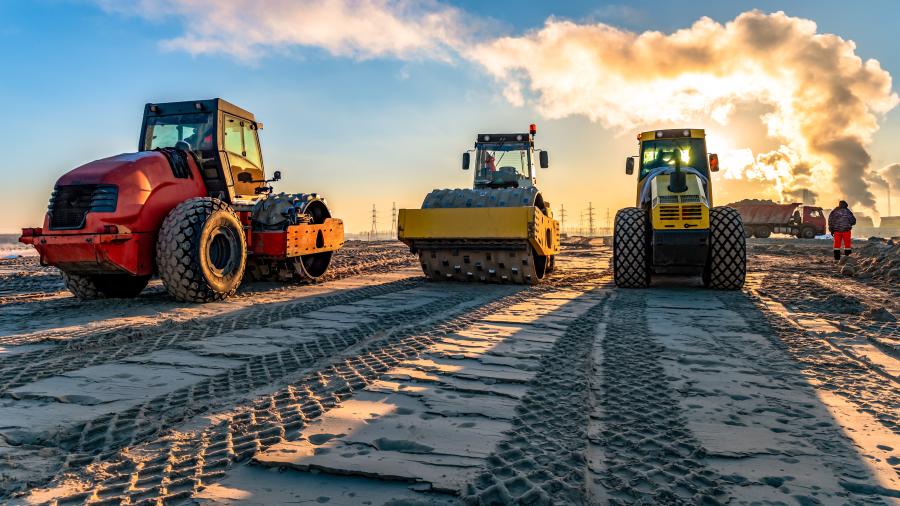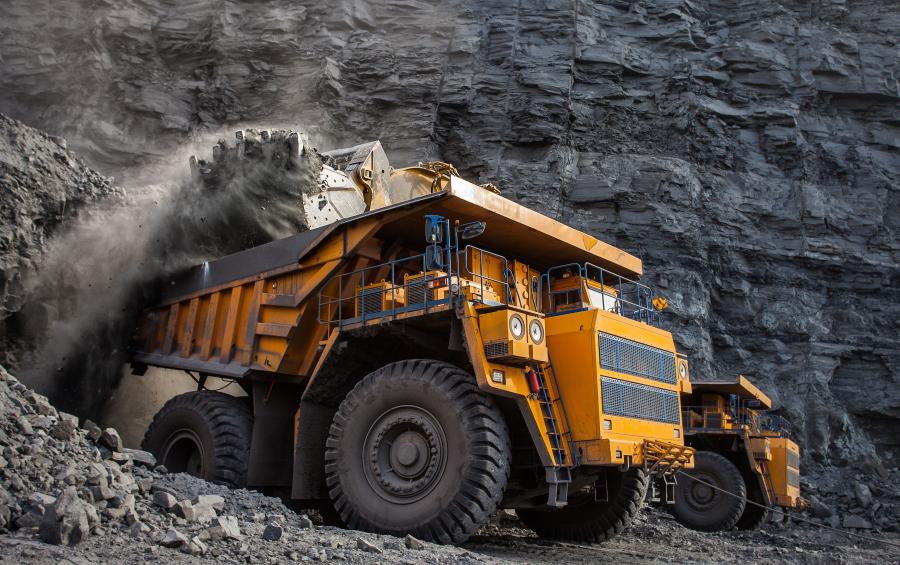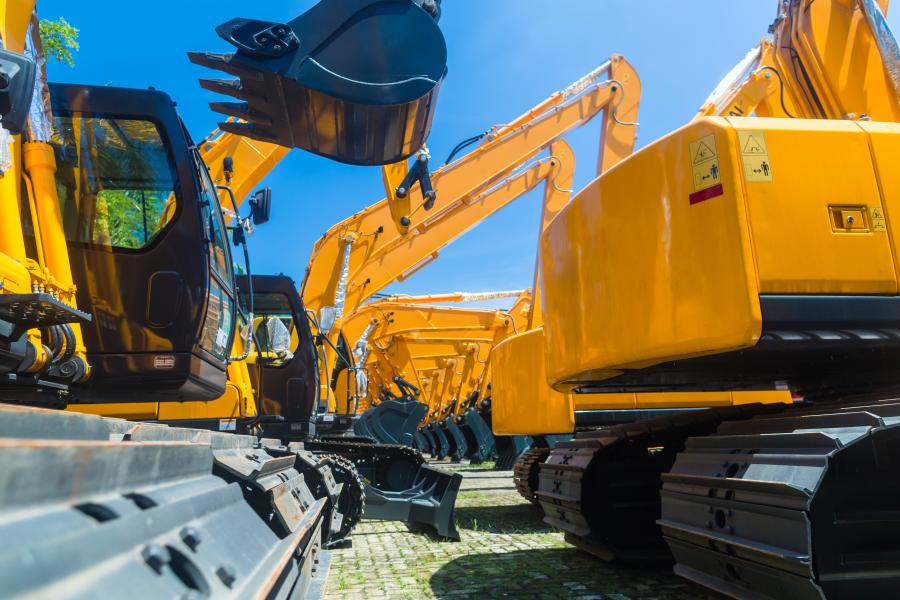The growing demand for heavy machinery is fueled by increased infrastructure construction activities as a result of both government and private investment.
Emerging from a market coma worsened by the pandemic, the new and used equipment sectors are in the midst of a high-demand cycle. If the heavy machinery market can navigate its way through supply-chain and labor issues, it should experience smooth sailing through 2023 and beyond.
At its second-quarter earnings conference in early August, Alta Equipment Group outlined a corporate optimism expressed by other construction companies across the United States.
"Demand for both new and used equipment continues to be at high levels and sales backlogs remain at record levels," said Ryan Greenawalt, chairman and CEO. "Our organic physical rental fleet utilization and rates on rental equipment continue to improve and tightness of supply continues to buy inventory values across all asset classes."
He attributed the rosy picture to "industry tailwinds" from the passing of the Bipartisan Infrastructure Bill, saying it is driving further demand for construction machinery.
"In our material handling segment, labor tightness and inflation are driving the adoption of more advanced and automated solutions while also driving the market to record levels," said Greenawalt.
Multiple Factors at Play
The U.S. construction equipment market specifically is experiencing a high compound annual growth rate (CAGR) because of increased building activities for infrastructure development.
That is the conclusion of a study conducted by India-based market research firm BlueWeave Consulting.
"The U.S. construction market is estimated to grow at a CAGR of 6 percent during the forecast period of 2022-2028," researchers reported. "The growing demand for construction equipment in this region is fueled by increased construction activities for infrastructural development as a result of government and private investment."
Because of this considerable investment, the infrastructure segment of the construction equipment market holds the biggest market share, said BlueWeave.
In fact, "explosive" is how one industry legal expert terms the global growth in demand for heavy machinery.
He attributes the explosion to economic and geopolitical developments.
Chief among industries seeing a significant uptick in machinery demand is the mining sector, said attorney James. R. Waite.
The uptick is driven by demand for lithium, graphene, cobalt, nickel and other components for batteries, electric vehicles and clean technologies, he said.
"Further bolstering the mining industry is increased demand for precious metals and traditional commodities, especially in Latin America, Asia and Africa," Waite said in an article in Engineering News Record. "In construction, demand for equipment and parts continues to skyrocket as countries around the world begin a new push to update roads, bridges and other infrastructure."
But, he said, upgrades are especially pressing in the United States, where roads, bridges, rail and other infrastructure projects are finally starting to receive significant government funding.
"That will directly benefit the heavy equipment industry, but it also will see logistical issues mount and supply shortages become more acute," said Waite.
He predicts the war in Ukraine and sanctions against Russia will drive up energy costs in the United States and elsewhere.
What the Future Holds
Waite also predicts regional consolidation specifically in the southeastern United States, where the state of Georgia is gaining a reputation as global hub for innovation in construction equipment.
"Six of the world's top 10 equipment manufacturers have identified the state as the new Silicon Valley of equipment manufacturing," said the heavy equipment industry attorney. "Georgia's business-friendly climate and a host of strong structural advantages have provided a strong boost to manufacturing and the heavy equipment industry in particular."
Georgia provides significant tax breaks for manufacturers and job creators, augmented by a generous state R&D tax credit.
The state also offers a skilled labor force, low rates of unionization, a top-tier university and technical college system, a superb manufacturing infrastructure and a world-class transportation system, he said.
Despite global issues including inflation, rising interest rates and the war in Ukraine, the heavy equipment sector is among industries continuing to make headway.
Waite said the industry has successfully leveraged global economic, infrastructure and geopolitical conditions to considerable advantage.
"As a result," he believes, "the industry is poised to continue thriving for the foreseeable future, driven by demand in multiple, only partly overlapping, industries, including mining, construction, energy and agriculture. States that seek to attract more heavy industry should follow Georgia's business-friendly example."
Market's Cautious Optimism
Early this year, the Association of Equipment Manufacturers (AEM) weighed in on the construction equipment market's expansion, saying that a number of challenges could present obstacles.
Short-term factors such as the lingering pandemic, ongoing supply-chain issues and persistent labor shortages were chief among AEM's list of challenges.
Secondary to those issues that have emerged to dampen enthusiasm were deglobalization and inflation.
"The last recession we experienced ended the longest period of economic expansion in the United States, and that recession lasted from February 2020 to April 2020," said Benjamin Duyck, AEM director of market intelligence.
"Two months, in traditional economic terms, can't even be accurately described as a recession," he said. "However, this economic disruption has impacted us all greatly, and we are still dealing with the aftereffects today — labor shortages, supply chain problems and higher interest rates."
The responses to AEM quarterly member surveys for the past two years have been positive in regard to how quickly they expect to recover to pre-COVID-19 levels.
"But the data for this last quarter is moving again in the other direction, largely due to the headwinds we're facing with inflation, workforce issues and supply chain disruptions," said Duyck.
Though inflation is a little lower, it has risen gradually, with a 9.7 percent increase in the last quarter of 2021.
Talent acquisition also is a troublesome factor for both ag and construction equipment manufacturers.
AEM's most recent quarterly member survey found that hiring remains a major issue.
In fact, 84 percent of all respondents have experienced issues in this area, while 90 percent of all ag members surveyed are affected.
Members are strategic in addressing hiring challenges, incorporating internships, educational partnerships, higher wages, bonuses, marketing and recruitment efforts, flexible hours and outsourcing.
But the association believes workforce will remain a prevalent issue for equipment manufacturers for the foreseeable future.
Supply-chain problems plaguing ag and construction equipment manufacturers also remain a major issue.
"COVID-19, followed by growing numbers of employees leaving the workforce, have led to both shutdowns and scarcity of products," he added.
In response, the supply chain has adjusted production downward to meet expected lower demand.
Plus, there's the fact that shipping companies cut schedules, expecting a drop in demand for shipments.
And though demand in some aspects of the economy dropped, the decrease was not evenly spread over all industries and all workers, AEM noted.
"While people still continued to spend money on homes and consumer purchases, interest rates remained low, and the U.S. experienced an expansion in monetary supply," said the association. "Furthermore, workers and businesses were supported by the government. All of this, combined with the scarcity of products and higher demand results in inflation, adversely impacting supply chains.
An eventual scarcity of products coupled with higher demand resulted in inflation making its way up the supply chain.
At the same time, factories could not expand easily due to bottlenecks in the chain caused by both low production and the global nature of production, according to AEM.
Now, overdemand makes it difficult for suppliers to understand the true demand for their products.
"We can see this in our industries, not only from the OEMs and from the component manufacturers, but also from the end users of the OEMS," said Duyck. "That, in short, is why we have supply-chain issues. Workforce, supply chain and all of it ties together and the results of policies and actions decades in the works set off by COVID-19."
Supply Chain Is a Choker
In AEM's most-recent quarterly survey, more than 95 percent of responding ag and construction equipment manufacturers said they are experiencing supply-chain issues.
However, last winter it appeared either demand was beginning to normalize, or supply chain signaling was improving, because 44 percent of respondents noted the issues are beginning to turn around, according to the association.
"For the vast majority of these people, issues are both domestic and global," said Duyck. "The issues are also widespread, but consensus opinion among members is that the issues lie particularly with prices, shipping and quantities of raw materials and, subsequently, inputs and components."
Further, the issues do not necessarily lie at the endpoint or receiving shipping, but rather at the supplier source — and especially international shipping, he added.
Supply-chain issues have caused many AEM members to fall behind, despite ongoing growth.
This situation could eventually lead to changes in inventory management, the survey found.
Duyck reported that the third quarter of 2021 saw inventory levels increase between 15 and 20 percent in both the ag and construction segments.
However, the ag side saw an additional 15 percent jump in the fourth quarter of last year.
"Whether changes in inventory management will actually take place has yet to be seen, but it's quite possible that higher inventory levels will become more prevalent for some time," said Duyck.
The bottom line, according to AEM, is that despite all the challenges, growth is still expected in the ag and construction equipment sectors, even at a slower rate than in recent months.
"Ultimately, the imbalance between supply and demand and COVID-19 restrictions eliminated all the inventory and the grease that allows the global supply clock to operate," said Duyck. "Another metaphor that maybe hits closer to our industries is this: We're running a machine that's low on oil, and almost out of it. The machine will continue to run, and maybe even run for a while — until it doesn't." CEG
Lucy Perry
Lucy Perry has 30 years of experience covering the U.S. construction industry. She has served as Editor of paving and lifting magazines, and has created content for many national and international construction trade publications. A native of Baton Rouge, Louisiana, she has a Journalism degree from Louisiana State University, and is an avid fan of all LSU sports. She resides in Kansas City, Missouri, with her husband, who has turned her into a major fan of the NFL Kansas City Chiefs. When she's not chasing after Lucy, their dachshund, Lucy likes to create mixed-media art.
Read more from Lucy Perry here.
Today's top stories


















